Agricultural and Biological Research
RNI # 24/103/2012-R1
Research Article - (2024) Volume 40, Issue 4
Vermicomposting is the conversion of biodegradable wastes into a high quality chemical free bio fertilizer with the aid of earthworms. However, due to the absence of agricultural research center nearby this area, researches are not undertaken on earthworm so that the farmers and other communities are not benefited from earthworm. Therefore, this research was intended to evaluate the adaptation of different species of earthworm. The research was implemented at Borena district, South Wollo zone Ethiopia, in 2021 winter seasons. The experiment was laid out in randomized complete block design using four earthworm species namely Finote (Eisenia andrei), Weramit (Eudrilus eugeniae), Farta (Eisenia foetida) and South (Perionyx excavates) with replicated thrice. Each treatment was assigned randomly to the experimental units within a pit. The size of each experimental pit was 0.5 m × 1 m × 1 m depth, width and length respectively. Total number of cocoons, reproductive rate, number of earthworms inoculated, number of days biomass attained, growth rate and maximum weight gain data were collected and analyzed. The analysis of variance showed significant difference (P<0.05) among earthworm species in all traits. Reproductive rate and maximum weight gain were the first prioritized traits to researchers for selecting best adaptable earthworm species. The result revealed Farta specie was recorded the best reproductive rate (3.12 hatching/co) and maximum weight (1520 mg) followed by Weramit species (2.5 hatching/co) and (1424 mg), respectively. Based on ANOVA result and visual observation of researcher’s farta specie was selected. This study also indicated that proper selection of species with improved management can increase decomposition rate of vermicompost, and ready to use with a short period of time. Therefore, Farta species will be recommended in Borena district and in areas with similar agro ecological zones.
Earthworm; Vermicomposting; Adaptation; Reproductive; Growth
Vermicomposting is just composting with worms. Vermicomposting is the process of transforming organic waste into worm castings, and it is one of the most cost-effective and ecologically beneficial methods of waste disposal. Earthworms can eat their own body weight every day in optimum conditions, therefore one kilogram of worms can devour one kilogram of residues every day. Furthermore, their castings include eight times the number of germs found in their meal. Furthermore, no illness or germs are present in the castings. Solid waste is a major environmental concern in both industrialized and developing countries in the current age of growth. Because soil fertility is declining globally and the amount of organic carbon and other minerals in soil is diminishing, any chance to use urban garbage to improve soil conditions must be pursued. Vermicomposting technology is the current notion of using earthworms to harness an ecosystem for the effective exploitation of organic leftovers. Soil organisms have a huge impact on terrestrial ecosystems. Earthworms impact to soil ecology and soil fertility has been established. Earthworms help ecosystems by turning organic materials into rich humus in the form of castings. Earthworms promote soil fertility and quality by influencing soil formation, increasing soil nutrient availability, stabilizing the soil, increasing soil porosity, improving water penetration, and improving soil general health.
Food production is dependent on healthy soils, and there is an urgent need to improve understanding of biodiversity and biophysical soil fertility management. As a result, reliable taxonomic information on soil organisms is critical. Unfortunately, the number of taxonomists trained to identify soil fauna is declining. Because of the fast growth in human population, climate change, and deteriorating soils, the adoption of environmentally friendly and sustainable agriculture is consequently long overdue. Few researches in South Africa have reported earthworm species in agroecosystems. Peregrine species were shown to be dominating in research on the presence of earthworms in agricultural areas. Tillage, in contrast to no tillage agriculture, has been shown to have a deleterious impact on endogenic and anemic earthworm variety and abundance. In South Africa more indigenous species exist under no till agriculture after Nxele, et al. discovered indigenous earthworms in sugar cane farms that had been no-till for more than twenty years [1]. As a result, in 2018, a project to document earthworm variety in farmed fields was launched in low tillage or no till agro ecosystems.
Vermicomposting, also known as earthworm vermistabilisation, worm composting, or annelic consumption Wang, et al. is an earthworm based aerobic process that holds a unique position in the domain of environmental engineering as the only pollution control that employs a multicellular animal as the primary bio agent [2]. In this process, earthworms and microorganisms work together to bio oxidize and change energy rich and complex organic compounds into stable products; hence, earthworms play an important role in fragmenting and modifying all biological activity of the waste. As a developing country, Ethiopian cities and towns bear the environmental costs of solid waste management, and, like other developing countries, the solid waste produced in Ethiopia is dominated by food, paper, and wastes of animal and vegetable origin. These materials are completely biodegradable. Due to the organic nature of these wastes, biological treatment solutions such as vermicomposting instead of landfill disposal, open dumping, or any other ecologically hazardous waste management alternatives are available.
Vermicomposting aids in the conversion of organic wastes (agro-waste, animal manure, and household garbage) into very nutrient dense fertilizers for plants and soil. Vermicompost is a finely split peat like substance with good structure, porosity, aeration, drainage, and moisture retention. Vermicompost, an organic fertilizer rich in NPK, micronutrients, and beneficial soil microorganisms (nitrogen fixing and phosphate solubilizing bacteria and actinomycetes), is a sustainable alternative to chemical fertilizers that is an outstanding growth promoter and plant protector. Vermicompost is becoming an essential component of organic farming systems since it is simple to make, has good characteristics, and is plant safe. Vermicompost enhances the soil's physical, chemical, and biological properties while also contributing to organic enrichment.
Vermiculture is the selective breeding of earthworm spices. The objective is to raise the number of worms on a continuous basis in order to get a sustainable yield. Species appropriate for vermicomposting are Eisenia foetida, Eudrilus eugeniae, and Perionyx excavatus. Carbonaceous and nitrogenous chemicals are converted into more stable complex organic forms that chemically and physiologically resemble humic substances during vermicomposting by the actions of successive microbial populations. It is a non-thermophilic, aerobic, bio oxidation method of organic waste decomposition that relies on earthworms to fragment, mix, and enhance microbial activity. The essential conditions for vermicomposting are appropriate bedding, a food source, acceptable moisture, proper aeration, appropriate temperature, and appropriate pH.
Worm bedding is any substance that provides a somewhat stable environment for worms. This environment should meet the following conditions for successful vermicomposting: High absorbency: Because worms breathe via their skin, the bedding must be able to absorb and hold appropriate water. Good bulking potential: The material's bulking potential should be such that worms acquire enough oxygen. Low nitrogen concentration (high carbon: Nitrogen ratio). Although worms devour their bedding as it decomposes, it is critical that the process be gradual. High protein/nitrogen levels can cause fast breakdown, and the resultant warmth can be lethal to worms. The regular addition of earthworm feed materials is the most important phase in the vermicomposting process. Earthworms may eat a wide range of organic materials, although they do have feeding preferences. In harsh situations, earthworms can extract enough nutrients from soil to survive. Earthworms, on the other hand, feed mostly on dead and decaying organic waste as well as free living soil microflora and fauna. Worms may consume more food than their body weights under optimum conditions; the typical rule of thumb is to ingest half of their body weight every day. Because of their greater nitrogen content, the most usually utilized worm food is livestock excreta, goat manure, cattle dung, horse manure, or pig manure. When using a material with higher carbon content and a C: N ratio more than 40:1, nitrogen supplements should be added to enable proper breakdown. As an overabundance of waste may cause heat, the food should be added only as a 22 restricted layer. 5%-10% of the waste consumed by the worms is digested in their bodies, with the remainder expelled in the form of vermicast.
The most crucial requirement of earthworms is enough hydration. They demand 65%-85% moisture. Otherwise, too much moisture in the food might lead to anaerobic conditions, which can be lethal to earthworms. Factors such as high amounts of fatty/oily compounds in the feedstock or excessive moisture mixed with insufficient aeration may result in anaerobic conditions in a vermicomposting system. Worms die quickly due to a lack of oxygen and harmful compounds (e.g., ammonia) created under such conditions. This is one of the key reasons why meat or other fatty/oily wastes should not be included in worm feedstock unless they have been precomposted to break down the oils and lipids.
Temperature has a significant impact on earthworm activity, metabolism, growth, respiration, and reproduction. Most earthworm species employed in vermicomposting require temperatures ranging from 10 to 35 degrees Celsius. While tolerances and preferences differ between species, earthworms prefer cool and damp temperatures over hot and dry conditions. Temperatures above 10℃ (minimum) and ideally 15℃ are maintained for maximum vermicomposting effectiveness for Eisenia foetida and above 15℃ (minimum) and preferably 20℃ for vermiculture. Temperatures above 35℃ may result in increased mortality. Worms will relocate themselves inside heaps, beds, or windrows to find optimum temperatures.
Worms may thrive in a pH range of 5 to 9, although 7.5 to 8.0 is considered ideal. In general, the pH of worm beds tends to decrease with time as a result of organic matter fragmentation caused by a series of chemical processes. Thus, if the food sources are alkaline, the impact is moderate, with the pH of the beds tending to neutral or slightly acidic, but if acidic (e.g., coffee grounds, peat moss), the pH of the beds can drop to below 7. Pests such as mites may proliferate in such acidic environments. The pH can be raised by adding calcium carbonate.
The use of organic fertilizers, such as vermicompost, might be an effective solution to the problem, as it could replace chemical inputs in crop production and lower economic costs while also leading to organic output, which commands a higher market price. The rise in global living standards has increased demand for organic produce, or production using only natural pesticides and fertilizers, which are regarded to be healthier for consumers and more environmentally friendly. Ethiopia is a newcomer to vermicomposting technology. Arancon, et al. on the other hand, indicated that the use of vermicomposting in several areas in Tigray national regional state increased grain output of many crops in compared to the control (nonfertilized) [3].
In this regard, vermicomposting is a feasible, easy, and cost-effective procedure for effectively managing organic and agro wastes by turning them into organic manure/soil conditioners. Vermicomposting may be used as a fertilizer and a source of nutrients for microbial populations, which can be useful to plant growth and development by reducing pollution from urban wastes, improving soil fertility and plant health, and reducing the consumption of inorganic fertilizer. Substituting organic fertilizers for chemical fertilizers, such as vermicomposting, can offer a boost to organic agricultural systems. In view of the existing problem, this study was proposed with the main objective to evaluate the adaptation of different earthworm species under Borena condition,
Thus, the study was carried out with the following specific objectives:
• To assess the adaptability of difference spp of earth warm.
• To determine the adaptive potential of earthworm spp.
Description of the study area
The study was carried out at Borna district. It is located 580 km away from Addis Ababa and 180 km away from Dessie (CSA, 2011/12 and WOA, 2013/14). Latitude between 10°45′ and 10°55′N and longitude between 38° 45′ and 38°49′E. and altitude 2100 masl. The annual mean rain fall is 900 mm and the average minimum and maximum temperature 9 and 28℃ respectively (unpublished data).
Materials for preparation of vermicompost
Crop residues, weed bio mass, vegetable waste, cattle manure, horse manure, wheat and field pea straw, top soil and ash.
Methods of vermicomposting
Bed (pit) method of vermicomposting was used on the plastic floor by making bed at the dimension of 0.5 m × 1 m × 1 m size of depth, width and length respectively.
Procedure of vermicomposting
Steps for vermicompost preparation
• The floor was free any chemical and covered by plastic.
• Vermicomposting unit was done in a cool, moist and shady site.
• Added chopped dried materials (maize stalk, grasses, crop residue,
vegetable waste, weed biomass etc.) around 10 hands/10 kg (15-20 cm)
at the bottom of the bed.
• Added slurry cow dung/cattle manure about 3 hands/kg/liter and
made sure it covers the dried materials.
• Added sulfur stone about 0.4 kg or 400 gram.
• Repeated the steps until the pit becomes too filled.
• Sprayed water on the upper part of the pit in 3 days interval.
• Kept the mixed materials for partial decomposition for 21 days.
• Each bed contained 2 quntal/200 kg of raw material.
• Released 1500 number of earthworms on the upper layer of 21 days
partial decomposed bed.
• Water was sprinkled immediately after the release of worms.
• Added ash around the bed to prevent earthworm from ants and
termites.
• Beds kept moist by sprinkling of water (daily) and by covering with dry
straw.
• Had a frequent check to avoid the compost from overheating, and
maintained proper moisture and temperature.
• Compost got ready in 50 days.
• The finished product was 3/4th of the raw materials used.
• Harvesting was taking place when raw materials were completely
decomposed it appears black and granular.
• Watering was stopped, as compost got ready. Kept the compost shout
over a heap of partially decomposed cow dung so that earthworms
could migrate to cow dung from compost. After two days compost was
separated and sieved for use.
Treatment application
The treatment was comprised of 4 different species of earthworm namely Finote (Eisenia andrei), Weramit (Eudrilus eugeniae), Farta (Eisenia foetida) and South (Perionyx excavates). Those species were collected from Adet agricultural research center sub-sector Weramit research center. The experiment was laid out in Randomized Complete Block Design (RCBD) with three replications. The size of each bed had 0.5 m × 1 m × 1 m depth, width and length respectively.
Parameter analysis of vermicompost
The total population of earthworms was estimated using a hand sorting method according to Zicsi, et al. This was done using sample sizes of 20 × 20 cm for estimating the total biomass population of earthworm per square meter in 4 samples taken from each treatment [4]. The earthworm population consisted of three age groups viz juvenile, non-clitellate and clitellate earthworms. The total amount of the vermicompost produced was collected in plastic waste bags and weighed in kilograms.
The earthworm biomass gained per unit feed mixture (mg/g).
B=B2-B1/W
Where:
B=Earthworm biomass gained.
B1=Initial biomass of worm (mg).
B2=Maximum biomass obtained by worm (mg).
W=Total quantity of organic waste taken (g).
The earthworm population consisted of three age groups viz juvenile, nonclitellate
and clitellate earthworms.
The earthworm growth rate
G=B2-B1/T*N
Where:
G=Earthworm growth rate (mg/worm/day).
B1=Initial biomass of worm (mg).
B2=Maximum biomass obtained by worm (mg).
T=Number of days in which biomass is attained.
N=Number of earthworms inoculated.
The total amount of the vermicompost produced was collected in plastic waste bags and weighed in kilograms.
• By using manual substrate, segregation (weight and count number of
cocoons) and,
• The earthworm reproduction rate.
R=C/E
Where:
R=Earthworm reproduction rate.
C=Total number of cocoons produced.
E=Total number of earthworms.
By using manual substrate, segregation (weight and count number of
cocoons) and productivity of vermicompost (harvested vermin compost
(kg)/total mass of feed multiply by 100%) was recorded.
Statistical analysis
The collected data were subjected to Analysis of Variance (ANOVA) as per the experimental design using GenStat 18th edition software. Fisher’s protected Least Significance Difference (LSD) test at 5% level of significance was used for the treatment mean separation.
Total number of cocoons
The earth worm total number of cocoons revealed statistically significant different among species (P<0.05). The highest number of total number of cocoons (425) was observed on Farta species while the lowest number of (315) was observed from Finote species and significant different observed among on the four species. This might be due to elongated, slender and streamlined body which is much helpful in burrowing habitat and presence of setae and musculature which help it in locomotion (Figure 1 and Table 1).
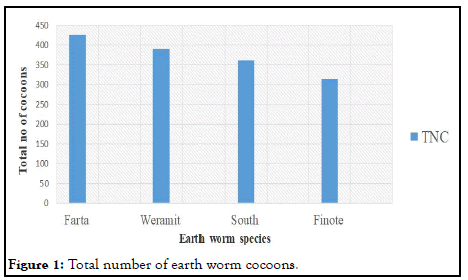
Figure 1: Total number of earth worm cocoons.
| Earth worm spp | TNC | RR | NEWI | NDBA | GR | MBG |
|---|---|---|---|---|---|---|
| Farta | 425a | 3.12a | 1326a | 25.24a | 3.56a | 1520a |
| Weramit | 390b | 2.50b | 975b | 24.30b | 3.15b | 1424b |
| South | 362c | 1.58c | 572c | 23.24c | 2.12c | 1350c |
| Finote | 315d | 1.56c | 491d | 22.50c | 2.15c | 1310c |
| CV | 10 | 3 | 12 | 6.5 | 2.5 | 13 |
| LSD (5%) | 27.8 | 1.2 | 79 | 0.75 | 0.35 | 60.5 |
TNC: Total No. of Cocoons; RR: Reproductive Rate; NEWI: No. of Earthworm Inoculated; NDBA: No. of Days Biomass Attained; GR: Growth Rate; MBG: Maximum Biomass Gained. Means with same letter(s) in same column are not significantly different at p ≤ 0.05; LSD: Least Significant Difference; CV: Coefficient of Variance.
TABLE 1: Mean performance analysis of variance of selected parameters
Earthworm reproductive rate
The earth worm reproductive rate revealed statistically significant different among species (P<0.05) but Finote and south species showed nonsignificant each other. The highest number of (3.12 hatching/co) was observed on Farta species while the lowest number of (1.56 hatching/co) was observed from Finote species (Figure 2). Each mature Eisenia foetida and Perionyx excavatus species on an average produces one cocoon every third day and from each cocoon on hatching within 22-24 days emerge from 1 to 3 individuals. This might due to hermaphroditism and regeneration capability ensures continuity of species, copulation followed by the formation of cocoon for fertilization and development are adaptation for reproduction on dry land (Supplementary Figures 1-6).
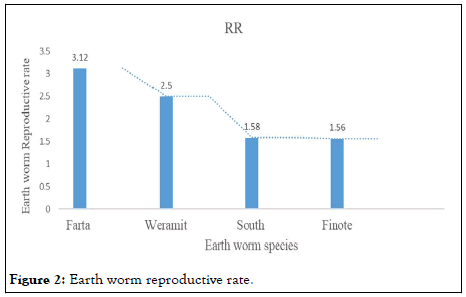
Figure 2: Earth worm reproductive rate.
Number of earth worms inoculated
The analysis of variance showed significant different among species (P<0.05). The highest number of earth worms inoculated (1326) was observed on Farta species while the lowest number of earth worms inoculated (491) was observed from Finote species (Figure 3).
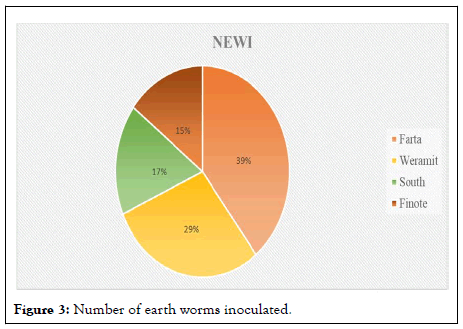
Figure 3: Number of earth worms inoculated.
Number of days biomass attained
The analysis of variance showed that statistically significant different among species (P<0.05). The shortest period biomass attained (22.50) was observed on Farta species while the longest (25.24) was observed from Finote species (Figure 4). Each mature worm on an average produces in 23 days. This might be due to high growth rate and composition capacity of the worm that gain biomass early. Feeding Esinia fetida with the five different feed stocks was statistically superior (p ≤ 0.05) in terms of worm population growth rate, worm population and vermicompost volume at the 22nd month as compared to the two locals earth worms fed on the five feed stocks.
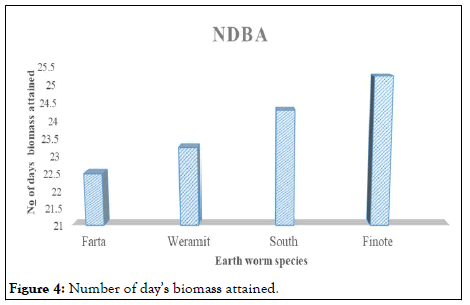
Figure 4: Number of day’s biomass attained.
Earth worm growth rate
The analysis of variance showed that statistically significant different (P<0.05) but nonsignificant different between south and Finote species. The highest growth rate of earth worms (3.56 mg/day) was observed on Farta species while the lowest growth rate of earth worms (2.12 mg/day) was observed from south species (Figure 5). In line on this, Dede, et al. reported that the average growth rate of Perionyx excavatus is 3.5 mg/day [5]. The growth rate (worm/day) has been considered as a good comparative index to compare the growth of earthworms in different waste or food [6-11]. The primary reason for this is that the worms took some time to adapt themselves with the condition and to enter to the normal reproductive situation [12].

Figure 5: Earth worm growth rate.
Maximum weight gain
Maximum weight gain statistically significant different (P<0.05) [13]. The result revealed that the highest maximum weight gain (1520 mg) from Farta species while the lowest maximum weight gain (1310) from Finote species but there was nonsignificant different between south and Finote species [14-18]. Similarly, Dede, et al., observed on Esenia foetida species the mature individuals can attain up to 1500 mg body weight. This could be due to the fact that individuals with these traits are better adapted to the environment and therefore more likely to survive and breed [19]. The timeframes for different types of adaptation are variable behavioral adaptation can be a very quick process whereas structural changes may occur over a very long period of time (Figure 6) [20-26].
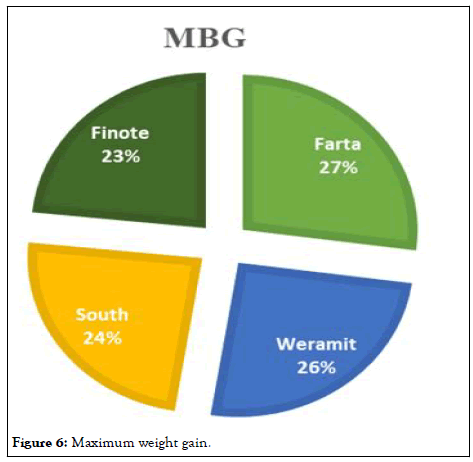
Figure 6: Maximum weight gain.
Vermicomposting is a feasible, easy, and cost-effective technology for efficiently managing organic and agro wastes by turning them into organic manure/soil conditioners. The total quantity of cocoons produced by earthworms differed statistically significantly across species (P<0.05). Farta species had the largest total number of cocoons (425), while Finote species had the lowest (315), with a significant difference found between the four species. This might be due to its elongated, thin, and streamlined form, which is beneficial in burrowing environment, as well as the presence of setae and muscles, which aid in movement. Farta species had the greatest hatching rate (3.12 hatching/co), whereas Finite species had the lowest hatching rate (1.56 hatching/co). Each adult species makes one cocoon every third day on average, and from each cocoon, 1 to 3 individuals emerge between 22-25 days of hatching. This may be related to hermaphroditism and regeneration capability, which insures species continuation. Copulation followed by the construction of a cocoon for fertilization and development are adaptations for dry land reproduction.
The analysis of variance revealed significant differences across species (P<0.05). Farta species had the maximum number of earth worms inoculated (1326) while Finote species had the lowest number of earth worms injected (491). Farta species had the longest period biomass (22.50), whereas Finote species had the shortest period biomass (25.24). This might be due to high growth rate and composition capacity of the worm that gain biomass early.
The analysis of variance revealed that there was a significant (P<0.05) but nonsignificant difference between the south and Finote species. The Farta species had the highest growth rate of earth worms (3.56 mg/day), while the south species had the lowest growth rate (2.12 mg/day). The results showed that Farta species had the highest maximum weight increase (1520 mg) and Finote species had the lowest maximum weight gain (1310 mg), but there was no significant difference between the two species. The growth rate (worm/day) has been proposed as a reasonable comparison metric for comparing the growth of earthworms in various waste or food sources. The fundamental reason for this is because the worms required some time to adjust to the setting and resume regular reproductive behavior.
It concludes that individuals with these characteristics are more suited to their surroundings and so more likely to live and reproduce. The timelines for various forms of adaptation vary. Behavioral adaptation can be a relatively rapid process, whereas structural alterations might take a very long time.
Four earthworm species were tested for adaptation at Borena district of south Wollo zone. Differences among species were significant for growth rate, reproductive rate, maximum weight gain and other traits. Reproductive rate and maximum weight gain were the first prioritized traits to researchers for selecting best adaptable earthworm species. Farta based on ANOVA result and visually selected by the researchers as good for reproductive rate and maximum weight gain followed by Weramit. This study also indicated that proper selection of species with improved management can increase decomposition rate of vermicompost, and ready to use with a short period of time. Therefore, based on researchers perception Farta species will be recommended in this district and in areas with similar agro-ecological zones.
[Crossref] [Google Scholar] [PubMed]
[Crossref] [Google Scholar] [PubMed]
Citation: Yimer AH, Tehulie NS, Woldesilasie M. Evaluation of different species of earthworm for adaptability at Borena District, South Wollo Ethiopia. AGBIR. 2024;40(4):1302-1307.
Received: 07-Apr-2023, Manuscript No. AGBIR-23-94808; , Pre QC No. AGBIR-23-94808 (PQ); Editor assigned: 10-Apr-2023, Pre QC No. AGBIR-23-94808 (PQ); Reviewed: 24-Apr-2023, QC No. AGBIR-23-94808; Revised: 05-Jul-2024, Manuscript No. AGBIR-23-94808 (R); Published: 12-Jul-2024, DOI: 10.37532/0970-1907.24.40(4).1302-1307
